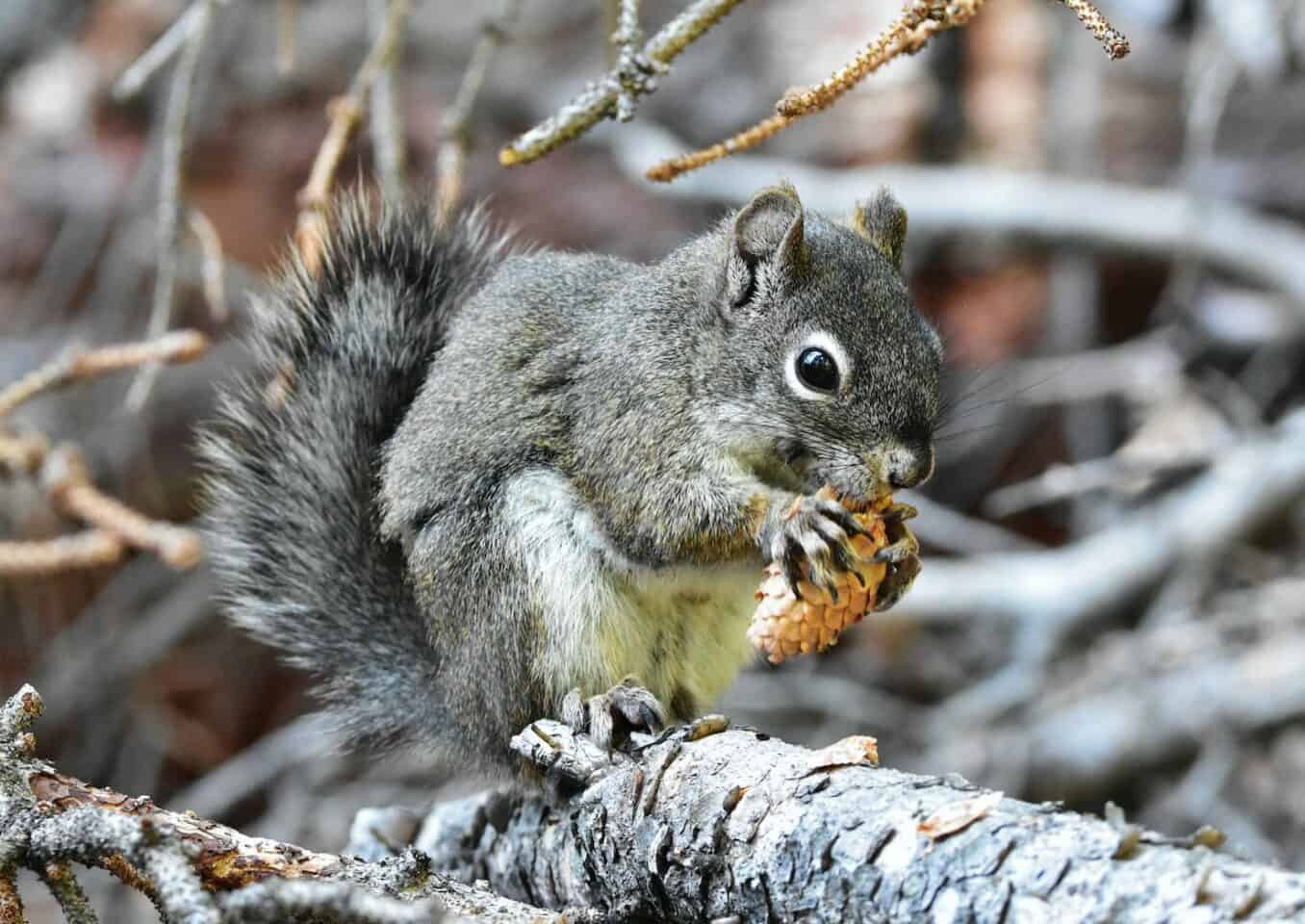Gray Squirrels are primarily forest dwellers, but have adapted to the encroachment of humans by becoming part of large city parks. You can often see them scurrying about, foraging for seeds, buds, and nuts.
- For more information about the care of Gray Squirrel see: Guide to a Happy, Healthy Squirrel
Scientific Classification
| Kingdom: | Animalia |
| Phylum: | Chordata |
| Class: | Mammalia |
| Order: | Rodentia |
| Family: | Sciuridae |
| Genus: | Sciurus |
| Species: | carolinensis |
Scientific name
Background
Gray Squirrels are native to North America, found mostly in the Eastern United States. They were also introduced to other areas of the world, such as Ireland, South Africa, and Great Britain.
Their homes are in tree cavities or in bulky water-proof twig and leaf nests built in tree branches. They also dig burrows in the ground, but these are for food storage.
They are generally a quiet little creature, but if alarmed will emit a harsh guttural “bark”, flipping its tail with each squawk.
Gray Squirrels eat acorns and hickory nuts throughout the year, though they may eat buds, tender twigs, seeds, and insects when the weather permits. Unlike their very active smaller cousin the American Red Squirrel, which needs large amounts of seeds and nuts to see it through the winter, the Gray Squirrel can subsist on a rather small quantity of buds and nuts, and will often sleep soundly through periods of stormy weather.
They are not quite as fearless as the American Red Squirrel in the presence of humans, but will soon overcome their caution and come out to visit if you sit quietly.
Description
Eastern Gray Squirrels are 17″-20″ long, and 8 1/2″ – 9 1/2″ of this length is their bushy tail! There are marked color variations in this squirrel, so at one time they were described as four different species, but today they are all contained in one valid species.
Interesting Facts
- Gray squirrels are so plentiful that they often have to regulate their populations by shooting them for sport, or poisoning and trapping them.
- They are not nocturnal, and are most active at dawn and at dusk gathering food. They will generally spend the late morning and noon hours in the nest, coming out in mid afternoon, and then retiring for the rest of the night an hour or so before sunset.
Featured Image Credit: Michael B, Unsplash
